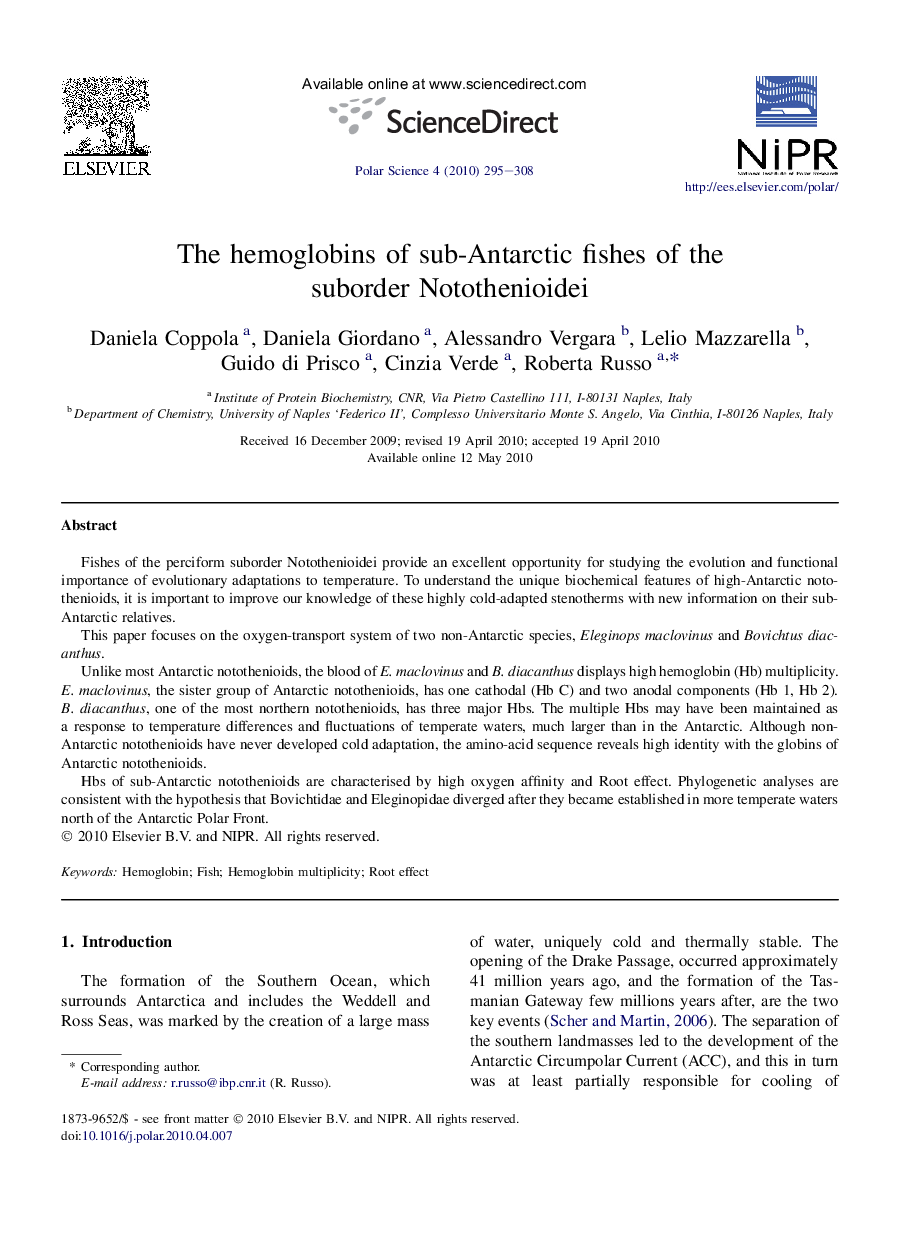| Article ID | Journal | Published Year | Pages | File Type |
|---|---|---|---|---|
| 4683312 | Polar Science | 2010 | 14 Pages |
Fishes of the perciform suborder Notothenioidei provide an excellent opportunity for studying the evolution and functional importance of evolutionary adaptations to temperature. To understand the unique biochemical features of high-Antarctic notothenioids, it is important to improve our knowledge of these highly cold-adapted stenotherms with new information on their sub-Antarctic relatives.This paper focuses on the oxygen-transport system of two non-Antarctic species, Eleginops maclovinus and Bovichtus diacanthus.Unlike most Antarctic notothenioids, the blood of E. maclovinus and B. diacanthus displays high hemoglobin (Hb) multiplicity. E. maclovinus, the sister group of Antarctic notothenioids, has one cathodal (Hb C) and two anodal components (Hb 1, Hb 2). B. diacanthus, one of the most northern notothenioids, has three major Hbs. The multiple Hbs may have been maintained as a response to temperature differences and fluctuations of temperate waters, much larger than in the Antarctic. Although non-Antarctic notothenioids have never developed cold adaptation, the amino-acid sequence reveals high identity with the globins of Antarctic notothenioids.Hbs of sub-Antarctic notothenioids are characterised by high oxygen affinity and Root effect. Phylogenetic analyses are consistent with the hypothesis that Bovichtidae and Eleginopidae diverged after they became established in more temperate waters north of the Antarctic Polar Front.
